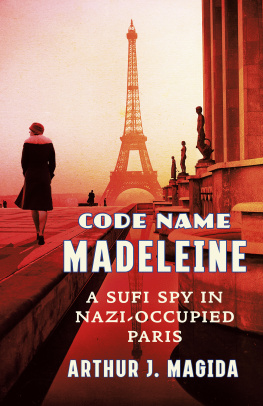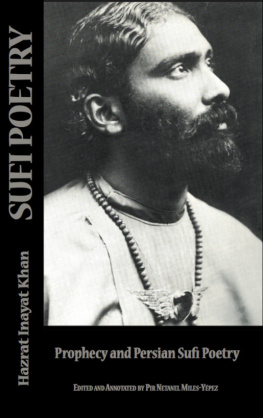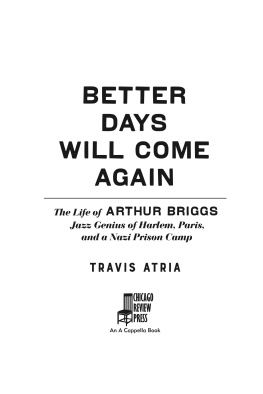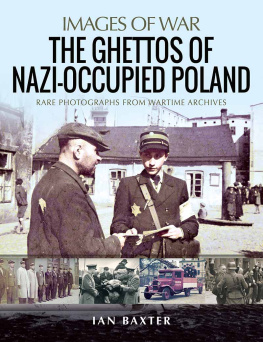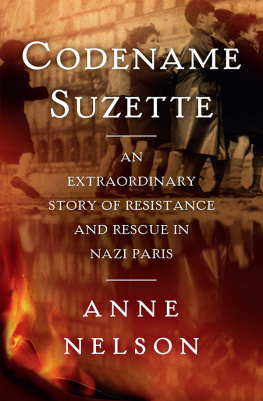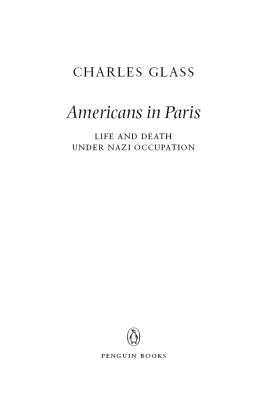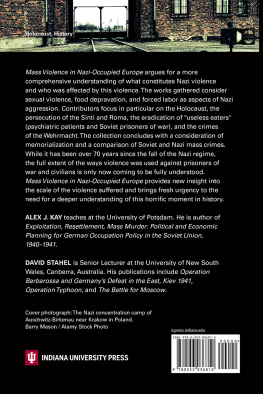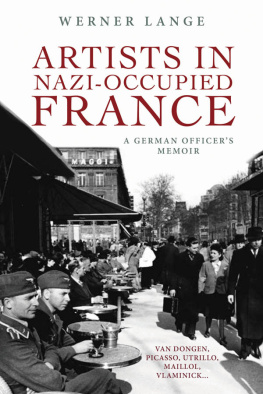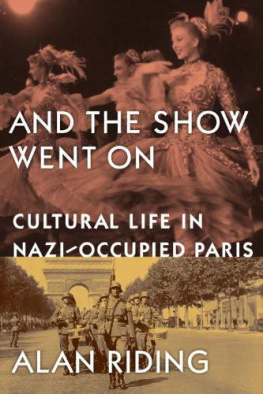Arthur J. Magida - Code Name Madeleine: A Sufi Spy in Nazi-Occupied Paris
Here you can read online Arthur J. Magida - Code Name Madeleine: A Sufi Spy in Nazi-Occupied Paris full text of the book (entire story) in english for free. Download pdf and epub, get meaning, cover and reviews about this ebook. year: 2020, publisher: W. W. Norton & Company, genre: Non-fiction. Description of the work, (preface) as well as reviews are available. Best literature library LitArk.com created for fans of good reading and offers a wide selection of genres:
Romance novel
Science fiction
Adventure
Detective
Science
History
Home and family
Prose
Art
Politics
Computer
Non-fiction
Religion
Business
Children
Humor
Choose a favorite category and find really read worthwhile books. Enjoy immersion in the world of imagination, feel the emotions of the characters or learn something new for yourself, make an fascinating discovery.
- Book:Code Name Madeleine: A Sufi Spy in Nazi-Occupied Paris
- Author:
- Publisher:W. W. Norton & Company
- Genre:
- Year:2020
- Rating:3 / 5
- Favourites:Add to favourites
- Your mark:
- 60
- 1
- 2
- 3
- 4
- 5
Code Name Madeleine: A Sufi Spy in Nazi-Occupied Paris: summary, description and annotation
We offer to read an annotation, description, summary or preface (depends on what the author of the book "Code Name Madeleine: A Sufi Spy in Nazi-Occupied Paris" wrote himself). If you haven't found the necessary information about the book — write in the comments, we will try to find it.
Code Name Madeleine: A Sufi Spy in Nazi-Occupied Paris — read online for free the complete book (whole text) full work
Below is the text of the book, divided by pages. System saving the place of the last page read, allows you to conveniently read the book "Code Name Madeleine: A Sufi Spy in Nazi-Occupied Paris" online for free, without having to search again every time where you left off. Put a bookmark, and you can go to the page where you finished reading at any time.
Font size:
Interval:
Bookmark:

CODE NAME
MADELEINE
A SUFI SPY IN NAZI-OCCUPIED PARIS
ARTHUR J. MAGIDA

W.W. NORTON & COMPANY
Independent Publishers Since 1923
T here was a full moon that night. There had to be. That was the only way to fly. The pilot of the lightweight plane that was taking Noor to France used no lights, not even a flashlight to help him scan the crumpled-up map that rested on his knee. Stripped to meet weight and space restrictions, Frank Rymillss Lysander also carried no guns, no armor, no radios, no navigatora challenge for flights that demanded pinpoint navigation: when seen from the air, Rymillss target was virtually a needlepoint in a dark, hostile countryside. But everything the Lysander lacked gave Rymills a major advantage over the Germans: if his radio was on and the Nazis were listening, they knew he was up there, but they didnt know where. It was a big sky, and being unable to determine his location was a big benefit.
Of all the ways Britain pierced occupied France, the air was the greatest surprise to the Germans. The Nazis knew from the beginning of the war that they would have a hard time securing Frances long coastline, especially in Brittany with its hundreds of bays and inlets. The same with the Pyrenees, where downed airmen and desperate Jews were soon going one way as incoming spies went the other. But the Germans had barely pondered that their empire could be penetrated from the air (except for high-flying bombers) until they began hearing about mysterious aircraft flying into territory that had no obvious strategic value. The planes didnt drop bombs and they werent conducting reconnaissance. They were dropping agents and crates with weapons and wireless transmitters. The Germans werent ready for this kind of war.
They also werent ready to detect these planes, tiny as they were. By 1943, Britain had better radar than the Nazis. For that, the Germans could thank Hitler. The Fuehrer believed that defense wasted time, money, men, weapons. Only one thing mattered to Hitler when countries smashed up against each other: advance, advance some more, and with each advance, crush your enemys army and shatter his confidence and his courage until whats left is a glaring and shameful defeat.
Hitlers creed served him well, at first. But he hadnt reckoned on Englands refusal to buckle under the bombing of its cities and the torpedoing of its fleets and the rationing of its food. Hitler couldnt understand why England didnt wave a white flag and call it quits. And he surely hadnt counted on these gnat-like Lysanders: ten feet shorter than Germanys legendary fighter, the Messerschmitt Bf 109, Lysanders crawled along at 212 miles an hour, about thirty-five percent slower than Messerschmitts. Lysanders took about an hour and a half to bounce from their secret bases in England to fields in France, literally fields where cows grazed and crops grew: places no one would normally call an airfield. Ideal for their missions, Lysanders could land in less than the length of a football field, and they were equipped with extra fuel tanks that upped their range to 1,150 miles. The British had discovered that high-flying German planes could spot Lysanders silhouetted against the ground. Applying camouflage colors to the upper part of every Lysanders fuselage and the top surface of its wings made the planes nearly invisible. Also, ladders were bolted near the rear door to let passengers out in a flash, cutting the planes turnaround time. When Lysanders landed in the dark somewhere in Europe, every extra second on the ground could cost the pilot and his passengers their lives.
Give Lysander pilots a full moon and they were ready to go. For them, said a British general, The moon was as much of a goddess as she ever was in a near eastern religion. The moon determined when someone would go into France or come out of it. No one flew when there was solid cloud cover on a moonless night. This made navigation difficult because ground features were barely discernible. A clear night with a full moon was better. Best was a full moon with cloud cover around 2,000 to 3,000 feet: then the planes were difficult to detect and their pilots had optimal visibility. In France, members of the Resistance tagged comrades by the phase of the moon when they had flown a Lysander: someone was coming on the next moon, or they had already arrived on the last moon, be it the March moon, or the June moon, or the September moon. Unlike the rest of humanity, theirs was not a heliocentric universe. It was lunar-centric.
By the time Frank Rymills was making this flight in mid-June 1943, Lysanders had already flown into France 101 agents who belonged to a top-secret British operationthe Strategic Operations Executive. The planes routes were proven; the pilots were some of Englands best; and the English Channelbarely twenty-one miles across at its narrowest pointwas proving more penetrable than the Nazis let on. Sometimes Rymills had three passengers: one on the floor, two on a seat. Tonight, he had two. He knew little about them beyond their code names. Lysander pilots never knew the real names of their passengers. That was too dangerous. He quickly sized up Cecily Lefort, and he didnt like her. A courier for an SOE cell in southeastern France, Lefort looked like a vicars wife and her French wasnt all that hot. His other passenger, Noor Inayat Khan, was more intriguing. Her light-brown skin, good looks, and vague, not quite placeable accent puzzled Rymills as much as his inability to figure out why someone so easy to spot was being sent to France. The general thinking in the SOE was that the less interesting an agent, the easier it was for her to blend in. The best agents were so bland that they rarely got a second look. Noor was just the opposite. She warranted attention, and invariably she got it. One SOE agent who had trained with Noor called her a splendid, vague, dreamy creature, far too conspicuous. Twice seen. Never forgotten.
Rymills couldnt question his passengers about anything. That was against the rules. So he fell into his usual routine of being a good host. Some of his gestures bent RAF protocol, like asking his passengers to pass around the flasks he had stowed in front of their seatsone had black coffee, the other coffee laced with rum. Other gestures were fine, like reminding his passengers that once they were over France they would see the graceful, swooping loops of the Loire. From the air, the river was a brilliant illusion, appearing firm and supple, almost idle, a calm counterbalance to what awaited Noor once they landed. Viewing the Loire would be Noors last chance for repose on the flight, probably her last until she returned to England.
As they crossed into France, Rymills jumped into his role as a tour guide. Now, madame, he said into the intercom that connected him with Noor, we are approaching your beautiful country.... Rymills spoke to Noor like this because he had heard rumors that she had French roots. Despite the ban on Lysander pilots knowing anything about their passengers, something usually leaked out about them.
Isnt it lovely in the moonlight? he asked Noor.
I think it is heavenly, Noor shouted into her intercom, a noisy four feet behind Rymills. What, she inquired, is that town over there? pointing to the sort of view she had heard about from poets and dreamers, but had never expected to enjoy herself.
For the next thirty minutes, Rymills shouted over the roar of his engine about the landmarks belowchteaus, some of the finest in France; and bridges that dated back to the Romans; and towns that were treasures of history and architecture. If Rymills had been flying higherhalfway across the Channel, he had dropped from around eight thousand feet so he would be below the Nazis radar horizonthe gleam of Paris would have been visible. But Paris was dark, and Rymills was flying low, and Noor was happy just to be returning home.
Next pageFont size:
Interval:
Bookmark:
Similar books «Code Name Madeleine: A Sufi Spy in Nazi-Occupied Paris»
Look at similar books to Code Name Madeleine: A Sufi Spy in Nazi-Occupied Paris. We have selected literature similar in name and meaning in the hope of providing readers with more options to find new, interesting, not yet read works.
Discussion, reviews of the book Code Name Madeleine: A Sufi Spy in Nazi-Occupied Paris and just readers' own opinions. Leave your comments, write what you think about the work, its meaning or the main characters. Specify what exactly you liked and what you didn't like, and why you think so.

